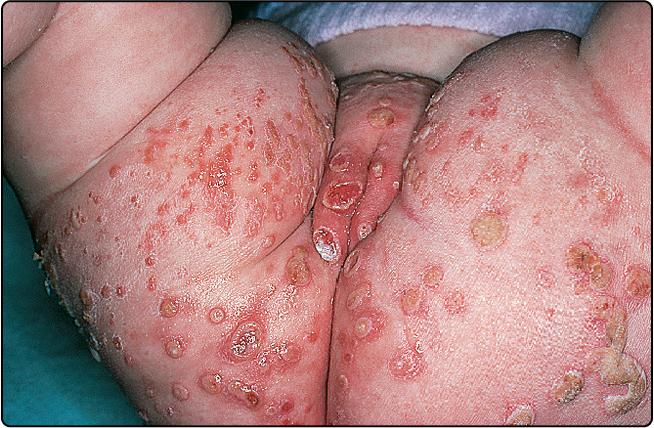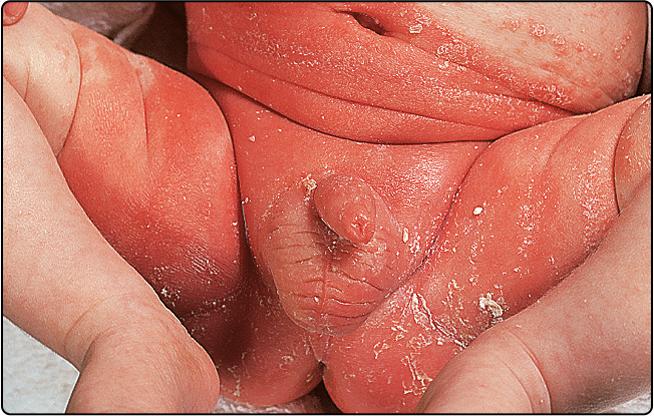Physical Address
304 North Cardinal St.
Dorchester Center, MA 02124
Some conditions are almost exclusive to childhood (e.g. napkin dermatitis and juvenile plantar dermatosis), and others are more common in children (e.g. atopic eczema or viral exanthems). The common childhood dermatoses not mentioned elsewhere are detailed here along with some rare but important disorders.
Forms of eczema found in childhood include:
napkin (diaper) dermatitis
infantile seborrhoeic dermatitis
napkin psoriasis
candidiasis
juvenile plantar dermatosis
pityriasis alba
atopic eczema (p. 50).
Napkin dermatitis is the commonest type of napkin eruption. It is usually seen in infants who are only a few weeks old, and is rare after the age of 12 months. It is an irritant dermatitis due to the macerating effect of prolonged contact of the skin with faeces and urine. A glazed erythema is seen in the napkin area, sparing the skin folds. Erosions or ulceration may follow ( Fig. 66.1 ), and hypopigmentation is a complication in pigmented skin. Secondary bacterial or Candida albicans infection is frequent, and the latter may account for the development of erythematous papules or pustules.

The differential diagnosis is from infantile seborrhoeic eczema and candidiasis, both of which tend to affect the flexures. The treatment of napkin dermatitis is aimed at keeping the area dry. The use of disposable superabsorbent nappies helps, as may more frequent changes. A bland white soft paraffin is used, with aqueous cream as a soap substitute, and a silicone-based cream (e.g. Drapolene) may have a protective action. Topical 1% hydrocortisone, with an antifungal (e.g. Daktacort or Canesten-HC), is also effective.
Infantile seborrhoeic eczema starts in the first few weeks of life and tends to affect the body folds, including the axillae, groin and neck, but it also may involve the face and scalp. Flexural lesions present as moist, shiny, well-demarcated scaly erythema ( Fig. 66.2 ), but a yellowish crust is often found on the scalp. The condition can usually be differentiated from napkin dermatitis (which spares the flexures), candidiasis (which is usually pustular) and atopic eczema (which is more pruritic, although differentiation can be difficult in some cases). Infantile seborrhoeic eczema is treated with emollients and 1% hydrocortisone ointment, or with a hydrocortisone–antifungal combination. Scalp lesions respond to 2% ketoconazole shampoo. Olive oil will help to soften the scalp scales of cradle cap.

Become a Clinical Tree membership for Full access and enjoy Unlimited articles
If you are a member. Log in here